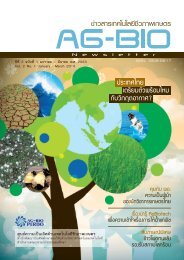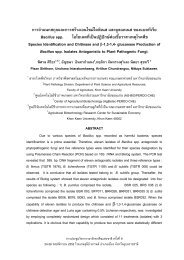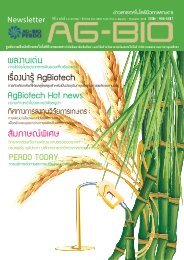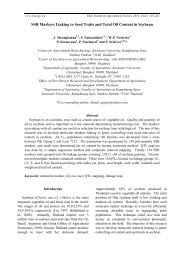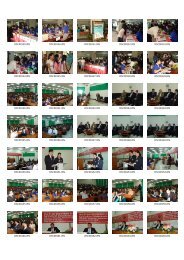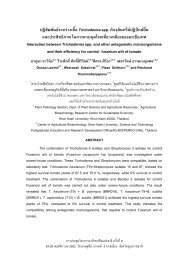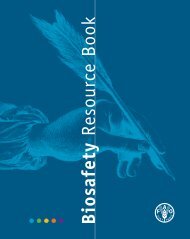Biosafety Manual PDF - Lawrence Berkeley National Laboratory
Biosafety Manual PDF - Lawrence Berkeley National Laboratory
Biosafety Manual PDF - Lawrence Berkeley National Laboratory
Create successful ePaper yourself
Turn your PDF publications into a flip-book with our unique Google optimized e-Paper software.
<strong>Biosafety</strong> <strong>Manual</strong><br />
IBC-approved version (May 18, 2010)<br />
Section VIII-G of BMBL contains information and guidance on specific toxins. When<br />
applicable, this guidance must be reviewed and should be incorporated into the work in<br />
accordance with the IBC-approved risk assessment.<br />
3.3.2.5 Select Agents and Toxins<br />
Select agents and toxins are specific pathogenic agents and toxins regulated by<br />
the HHS-CDC and The USDA-APHIS due to their potential threat (e.g., as biological<br />
weapons) to human, animal, and plant health. Specific genetic elements,<br />
recombinant nucleic acids, and recombinant organisms that may pose a similar<br />
threat are also regulated. Appendix B, Section B.2, of this manual provides the list of select<br />
agents and toxins and additional toxin information.<br />
Possession, use, storage, or transfer of select agents and toxins must be conducted in<br />
compliance with the HHS-CDC and USDA-APHIS regulations related to human, plant, and<br />
animal select agents and toxins. Specific controls for select agents are detailed in LBNL’s<br />
<strong>Biosafety</strong>, Security, and Incident Response Plan for Select Agents, a controlled document.<br />
Controls for select agents have also been integrated into the overall biosafety program<br />
described in this manual.<br />
See the <strong>National</strong> Select Agent Registry (NSAR) Program Web site for additional information<br />
on select agents provided by HHS-CDC and USDA-APHIS. The NSAR Program oversees<br />
possession of select agents and toxins for the HHS-CDC Division of Select Agents and Toxins<br />
and the USDA-APHIS Agricultural Select Agent Program.<br />
3.3.2.6 Prions<br />
A prion is an infectious agent composed of protein. All such agents discovered to date<br />
propagate by transmitting a misfolded protein; the protein does not itself self-replicate and the<br />
process is dependent on the presence of the polypeptide in the host organism. The misfolded<br />
form of the prion protein has been implicated in prion diseases known as transmissible<br />
spongiform encephalopathies (TSEs). TSEs are neurodegenerative diseases that affect humans<br />
and a variety of domestic and wild animal species. Examples are Creutzfeldt-Jakob disease<br />
(CJD) in humans and bovine spongiform encephalopathy (BSE), also known as mad cow<br />
disease in cattle. All known prion diseases affect the structure of the brain or other neural tissue,<br />
are currently untreatable, and are always fatal.<br />
Normal and diseased (misfolded) prions.<br />
Source: ScienceBlogs, Basic Concepts: Prions, by Shelley Batts (February 11, 2007).<br />
Printed copies are not official versions of this manual. Before using the printed copy, verify that it is the most current version.<br />
20



